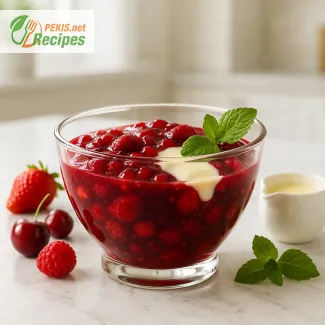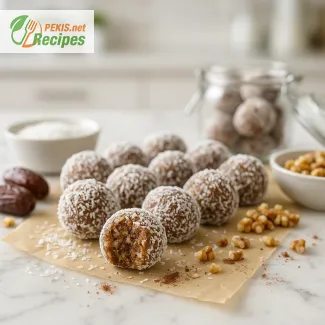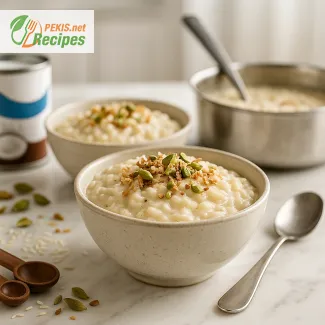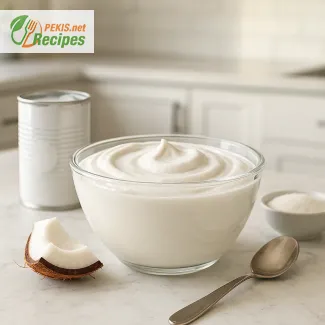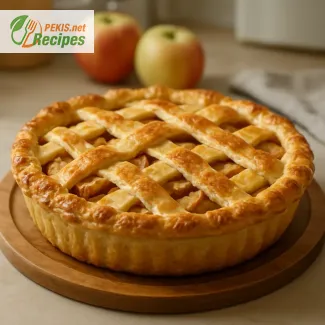
The Timeless Charm of a Homemade Apple Pie
A nostalgic dessert that brings generations together
Among the world’s most beloved desserts, apple pie holds a cherished place on every family table. Its appeal lies not only in the sweet-tart flavor of baked apples but in the comfort it brings with each bite. An old-fashioned apple pie, made from scratch with simple, wholesome ingredients, is more than just a treat—it’s a tribute to tradition. From golden, buttery crusts to spiced, tender apple slices, this classic dessert captures the essence of homemade baking.
Passed down through generations, the recipe for a classic apple pie represents the heart of home cooking. Whether served warm with a scoop of vanilla ice cream or cooled to perfection for an afternoon snack, its charm is timeless. The scent of cinnamon and baked apples wafting through the kitchen evokes memories of autumn harvests, holiday gatherings, and Sunday dinners.
The story behind the perfect apple pie
Creating a truly memorable apple pie is an art—one that blends balance, simplicity, and texture. The secret lies in choosing the right apples. A mix of firm, tart varieties like Granny Smith combined with sweeter apples such as Honeycrisp provides the perfect contrast in flavor and consistency. These apples hold their shape during baking and release just enough juice to create a moist, flavorful filling without becoming mushy.
The crust, often underestimated, is just as essential. A flaky, golden pastry made from scratch using cold butter or shortening and minimal handling results in a tender yet crisp foundation. When blind baked and layered with a slightly thickened apple filling, it supports the pie beautifully without becoming soggy. For those who appreciate texture, a lattice top crust not only adds a decorative finish but allows steam to escape during baking, keeping the apples perfectly caramelized.
Spices and techniques that elevate tradition
While apples are the star, the supporting cast of spices plays a crucial role. Ground cinnamon, nutmeg, cloves, and allspice enrich the flavor profile and bring warmth to every bite. A touch of lemon juice or zest balances the sweetness and preserves the brightness of the apples. Some bakers even add a splash of vanilla extract or a pinch of salt to intensify the complexity.
Preparing a homemade apple pie isn't about shortcuts—it’s about intention. Macerating the sliced apples in sugar before baking draws out excess moisture and enhances flavor. Some prefer to pre-cook the apple filling slightly to ensure even texture. Others brush the top crust with egg wash or sprinkle it with coarse sugar for a glistening finish. Each detail contributes to the pie's final appearance and taste.
Cultural heritage and seasonal rituals
The old-fashioned apple pie is more than a dessert—it’s a symbol. In American culinary culture, it represents home, hospitality, and national pride. Phrases like “as American as apple pie” are rooted in this deep connection. Yet this iconic dish transcends borders. Across Europe and North America, variations of apple pies appear in nearly every cuisine—from French “tarte aux pommes” to German “Apfelkuchen,” each with its own twist.
In seasonal cooking, apple pie takes center stage during fall and winter months, aligning with the harvest of fresh apples and holiday traditions. It’s a staple on Thanksgiving tables, a favorite during Christmas feasts, and a comforting offering on cold weekend afternoons. Its rustic elegance and nostalgic flavor profile make it one of the most versatile and beloved desserts in baking history.
Why old-fashioned methods still matter
In an age of convenience, the popularity of classic apple pie recipes remains strong. Home bakers continue to seek out reliable, tried-and-true methods for creating this dessert the way their grandparents did. The process of peeling, coring, slicing, and layering by hand connects us to the generations before us. The reward is not only in the taste but in the care invested in making something from scratch.
This commitment to traditional techniques yields more than a beautiful pie. It creates stories, invites gathering, and turns everyday ingredients into a shared experience. Baking apple pie at home is a sensory journey—from the tactile feel of kneading dough to the aroma of bubbling fruit in the oven.
Serving suggestions and pairings
An old-fashioned apple pie is delicious on its own, but a few thoughtful additions can turn it into a show-stopping dessert. A scoop of vanilla ice cream creates the classic hot-and-cold contrast. A drizzle of caramel sauce, a dollop of whipped cream, or even a sharp cheddar cheese slice (a tradition in some regions) adds new dimensions of flavor. Served with a cup of coffee, tea, or spiced cider, apple pie transforms into a cozy ritual.
Whether for a celebration or a quiet evening at home, this pie never disappoints. It’s proof that the simplest recipes, when made with love and attention, are often the most extraordinary.
- Make the crust: In a large bowl, combine all-purpose flour and salt. Add cold cubed butter and cut into the flour using a pastry cutter or fingertips until the mixture resembles coarse crumbs. Gradually add cold water, 1 tablespoon at a time, mixing just until the dough comes together. Divide the dough into two discs, wrap in plastic wrap, and chill for at least 60 minutes.
- Prepare the filling: In a large bowl, toss the sliced apples with granulated sugar, brown sugar, cinnamon, nutmeg, allspice, cornstarch, and lemon juice. Let sit for 15 minutes to draw out excess moisture.
- Roll out the crust: On a floured surface, roll out one disc of dough to fit a 23 cm (9-inch) pie dish. Press it gently into the dish, trimming any overhang.
- Fill the pie: Pour the apple filling into the crust-lined pie dish, mounding slightly in the center.
- Top the pie: Roll out the second disc of dough and place over the apples. Trim, seal, and crimp the edges. Cut a few small slits in the top crust to allow steam to escape. Alternatively, create a lattice crust for a traditional look.
- Egg wash: Beat the egg with milk and brush over the top crust for a golden finish.
- Bake the pie: Preheat the oven to 200°C (400°F). Place the pie on a baking sheet and bake for 20 minutes. Reduce the temperature to 175°C (350°F) and bake for an additional 35–40 minutes, or until the crust is golden and the filling is bubbling.
- Cool: Allow the pie to cool for at least 2 hours before slicing, so the filling can set properly.
Small Enhancements That Make a Big Difference in Apple Pie Baking
Tips to elevate the classic apple pie with subtle ingredient and technique upgrades
A traditional apple pie is comforting and timeless, but small, thoughtful changes can transform it into something exceptional. Whether you're an experienced baker or new to pastry, mastering the balance of flavor, texture, and aroma can make your apple pie stand out. From choosing the right apples to adjusting the crust ingredients or adding unexpected spice blends, each detail has the power to improve both taste and presentation.
Using different apple varieties for balanced flavor
One of the most effective ways to enhance the flavor of your pie is by combining multiple apple varieties. A common mistake is relying on just one type of apple, which often results in an unbalanced texture or overly sweet flavor. Mixing firm and tart apples like Granny Smith with juicy, sweet apples such as Honeycrisp or Fuji adds complexity. Tart apples maintain structure, while sweet ones melt slightly and enrich the filling with natural sugars. This combination prevents the pie from becoming one-dimensional and offers a pleasant contrast in texture.
Enhancing the crust for extra flakiness
The crust is more than a vessel—it defines the pie’s character. To improve it, use a blend of unsalted butter and vegetable shortening. Butter delivers rich flavor, while shortening contributes to tenderness and flakiness. For a deeper flavor, consider substituting a portion of the flour with almond flour or whole wheat flour, which adds nuttiness and a slightly crumbly texture. Another pro tip is adding a teaspoon of apple cider vinegar to the dough, which inhibits gluten formation and keeps the crust tender without affecting the taste.
Chilling the dough thoroughly before rolling is essential for maintaining structure and preventing shrinkage during baking. Overworking the dough is one of the most common errors—handle it as little as possible to keep the fat intact and ensure that coveted flaky texture.
Spicing it up creatively
Classic spice blends usually include cinnamon, nutmeg, and allspice, but experimenting with others like cardamom, ginger, or Chinese five spice can bring unique aromatic notes. Cardamom adds an exotic floral undertone, while ground ginger introduces a mild heat. Be cautious not to overpower the natural apple flavor—always aim for subtlety.
Vanilla extract is another underrated addition. Just half a teaspoon of pure vanilla can elevate the filling’s aroma and round out the sweetness. For a deeper caramel profile, replace part of the white sugar with maple syrup or molasses. These swaps can turn a familiar dessert into something memorable.
Creating healthier versions without sacrificing taste
A healthier apple pie doesn’t mean sacrificing enjoyment. Use less refined sugar and rely more on the apples’ natural sweetness. Apples like Pink Lady or Gala are naturally sweet and may require little to no added sugar. Honey, agave nectar, or coconut sugar can also replace granulated sugar for a gentler glycemic impact and more nuanced flavor.
For the crust, you can substitute whole wheat pastry flour or even use oat flour for a gluten-reduced option. Instead of butter, coconut oil or avocado oil provide healthy fats and a softer, more crumbly texture. You may also experiment with Greek yogurt in the dough to reduce fat and increase protein, yielding a moist, tender bite.
Homemade vs. store-bought: why fresh matters
While convenience often tempts bakers to use pre-made crusts or canned fillings, these shortcuts compromise both taste and texture. Homemade pie dough contains fewer additives and more wholesome ingredients, which means a cleaner, purer flavor. The filling, when made fresh, retains the fruit’s natural integrity, unlike canned varieties that often include excess sugar, preservatives, and artificial thickeners.
Home preparation also allows for customization—you control the amount of sugar, spices, and even the texture of the filling. This makes the pie not only tastier but also more adaptable to dietary needs or personal preferences.
Common mistakes and how to avoid them
One of the most frequent pitfalls is using apples that are too soft or overripe, which leads to mushy fillings and a watery base. Always choose apples that are firm and crisp to hold their shape during baking. Another issue is soggy bottoms, which can be prevented by blind-baking the crust before adding the filling or by brushing the inside of the crust with a light layer of egg white to create a moisture barrier.
Overloading the pie with filling can also cause structural collapse. A well-balanced ratio ensures even baking and attractive slicing. Cutting proper steam vents in the top crust or opting for a lattice design helps prevent excess moisture from being trapped inside, avoiding a gummy texture.
To elevate the look and flavor, brush the top crust with a mixture of egg yolk and cream before baking. This gives a rich, golden hue and glossy finish. Sprinkle with turbinado sugar or flaky sea salt to add texture and contrast. For an elegant serving option, pair the pie with lightly whipped cream, a dollop of crème fraîche, or a cheddar cheese slice, a classic touch in some regions that balances sweetness with savory depth.
Taking these extra steps doesn’t complicate the baking process—it refines it. The difference lies in attention to detail, choice of ingredients, and understanding how each component contributes to the final experience. With just a few thoughtful changes, a classic apple pie can be transformed into a signature dessert that reflects both tradition and creativity.
Allergens present in the recipe:
- Gluten (wheat flour)
- Eggs
- Milk (butter, milk in egg wash)
Gluten and allergen substitution tips:
- Use gluten-free all-purpose flour blend for crust (with xanthan gum) to eliminate gluten.
- Replace butter with plant-based margarine or coconut oil for a dairy-free version.
- Replace egg wash with a mix of plant milk and maple syrup for a golden crust.
Vitamins and minerals per serving (approximate):
- Vitamin C: 5 mg – supports immune function and skin health
- Vitamin A: 110 IU – promotes vision and skin integrity
- Calcium: 30 mg – supports bone health
- Iron: 1.2 mg – essential for oxygen transport in the blood
- Potassium: 190 mg – helps regulate fluid balance and nerve signals
Antioxidants per serving (approximate):
- Quercetin: 10 mg – found in apples, supports cardiovascular health and reduces inflammation
- Polyphenols: 50–60 mg – contributes to reduced oxidative stress
- Cinnamaldehyde (from cinnamon): 5–8 mg – has anti-inflammatory and antimicrobial properties
